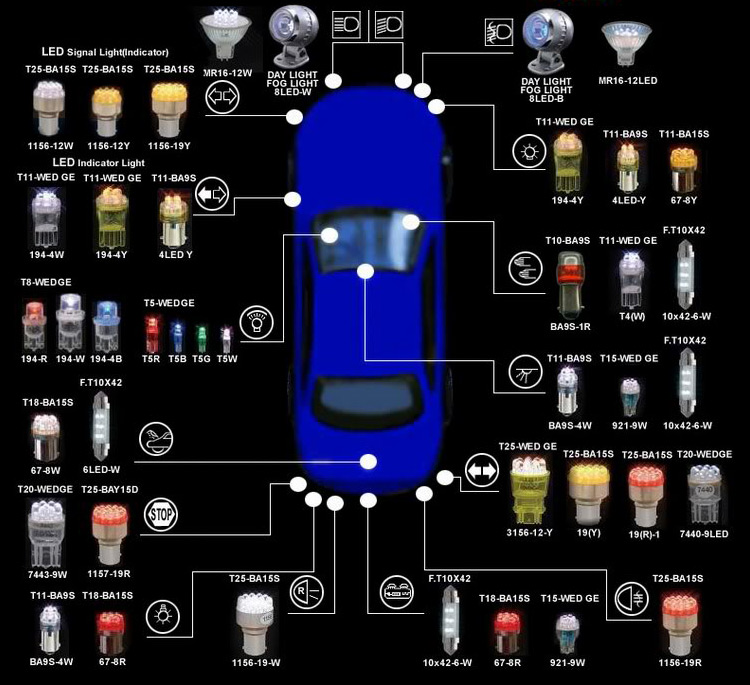
Whether we're talking about your headlights, brake or tail lights, indicator/turn lights or even your interior and dashboard lamps, all use energy and that's reflected in the amount of fuel your car consumes. If you've never changed bulbs, your car is probably already fitted with halogen bulbs as standard - these are lit by a filament and have a much higher power consumption than HID and LED bulbs. They are also not as effective and have a shorter life span, which is why switching to another light source makes sense. Standard bulbs are inexpensive massed produced items, utilising very rudimentary filaments with the glass bulb section normally filled with a basic, inert gas.
HID Xenon bulbs produce more light from less power and typically have a life span of around 2000 hours compared to a halogen's 450 ~ 1000 hours. HID lights are also more reliable and about 90% brighter. They have also a wider beam and project much further along the road making them a good deal safer too. The only downside to HID is that it takes a while to warm up so signaling with your headlights is not really an option.
On the other hand, LED car lighting up instantly, come in a variety of different colors, emit virtually no heat and also use less power to run. Plus, they have a whoppingly greater lifespan of up to 50,000 hours too. Moreover, the less power a bulb needs to run means the less fuel your car uses. The light that is eliminated by the diodes LEDs give a revolution that has been accomplished in electronic industries. The LED car bulbs are versatile as they lead to the invention of new ideas. Their light can be controlled easily in color and intensity. The light they produce is clear. It lowers your vehicle's CO2 emissions that do so much damage to our environment. There are a lot of car bulb classifications, depending on the high vision, ecological compatibility and long life, styling and designs. You could only decide the way you want to upgrade you vehicle.

